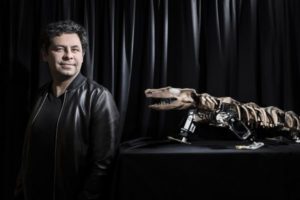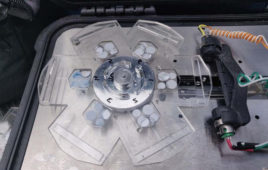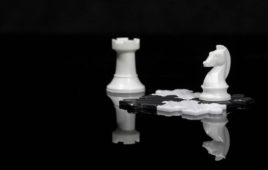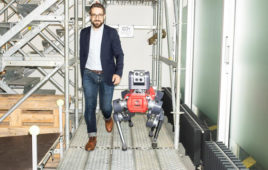Making a legged robot walk is not as simple as it looks. Coordinating the motion of all its joints to achieve smooth motions, close to those of real animals, requires advanced engineering and careful observation of moving animals. But what if we don’t exactly know how the animal looks or moves, as it has been extinct for 300 million years?
This is the story of Orobates pabsti, an early tetrapod that lived millions of years before the dinosaurs existed. Its fossilized bones were recovered in what today is Germany in 2004. The excellent state of preservation of its fossilized bones, nearly complete and articulated, was complemented with fossilized footprints, also found in the region. This helped engineers like me in the Biorobotics laboratory of EPFL (working with Tomislav Horvat and Auke Ijspeert) and a great team of biologists (led by John Nyakatura at the Humboldt University of Berlin) to reconstruct its locomotion using a robot.
 But why is the locomotion of Orobates important? Orobates is an ideal candidate for understanding how land vertebrates (including humans like us) evolved. These animals represent the transition from an amphibious lifestyle to land-living vertebrates capable of laying eggs on land. This places them in the evolutionary tree between the amphibians and more evolved animals including reptiles, birds, and mammals. Whether or not Orobates could walk on land seems crucial to be studied. For example, to shed light on debates related to when the dry land was finally colonized by animals. Locomotion experiments with living animals are difficult but with an extinct animal is in fact, impossible. We needed to find a way to reconstruct the locomotion of Orobates objectively. We thought that computer simulation was a good tool to do this but legged locomotion is difficult to simulate.
But why is the locomotion of Orobates important? Orobates is an ideal candidate for understanding how land vertebrates (including humans like us) evolved. These animals represent the transition from an amphibious lifestyle to land-living vertebrates capable of laying eggs on land. This places them in the evolutionary tree between the amphibians and more evolved animals including reptiles, birds, and mammals. Whether or not Orobates could walk on land seems crucial to be studied. For example, to shed light on debates related to when the dry land was finally colonized by animals. Locomotion experiments with living animals are difficult but with an extinct animal is in fact, impossible. We needed to find a way to reconstruct the locomotion of Orobates objectively. We thought that computer simulation was a good tool to do this but legged locomotion is difficult to simulate.
Read more in the latest issue of „driven“.
Filed Under: maxon Driven




